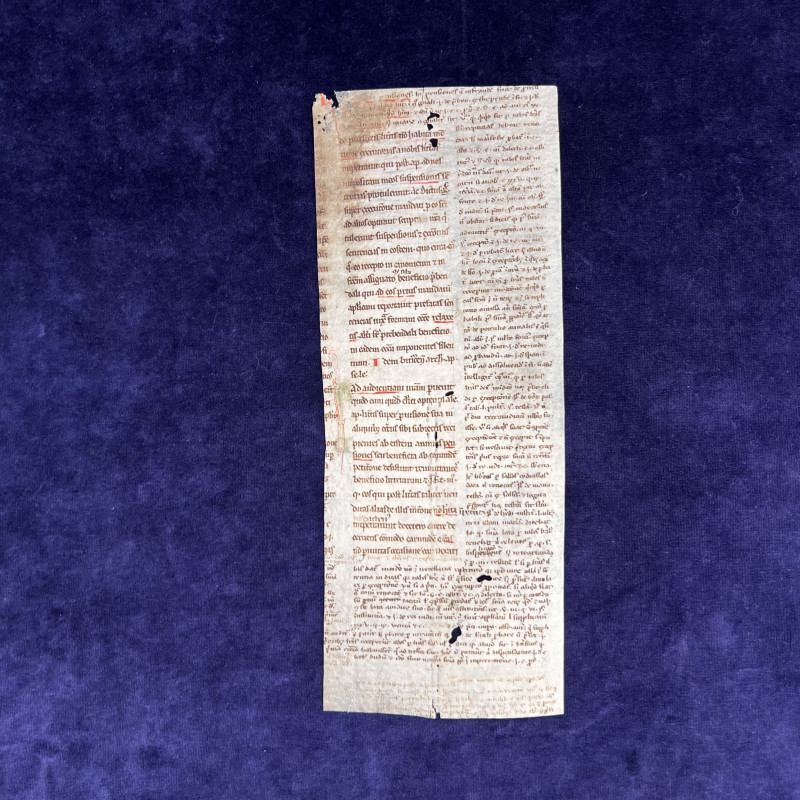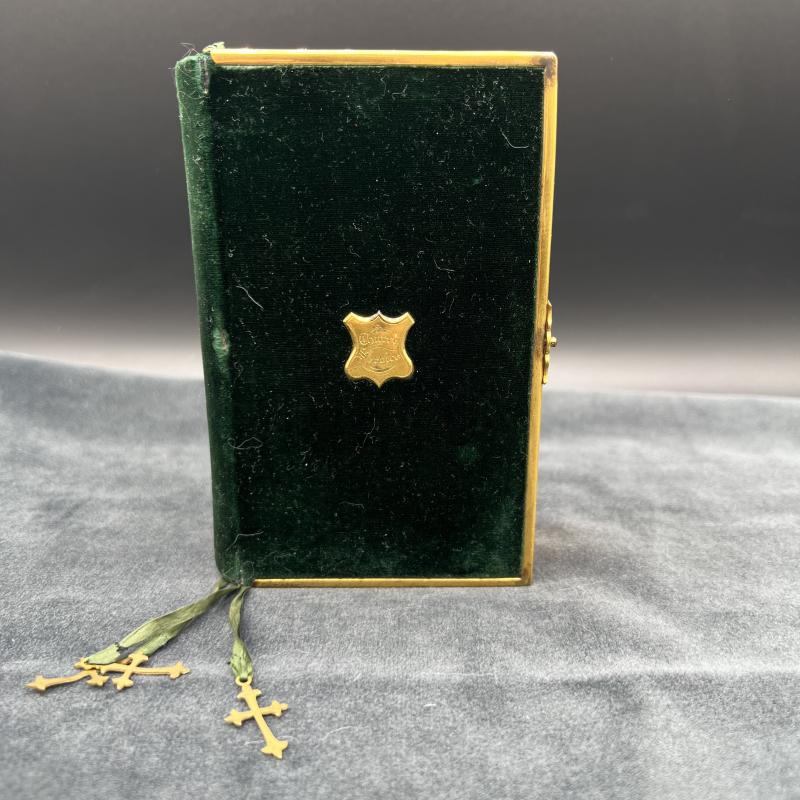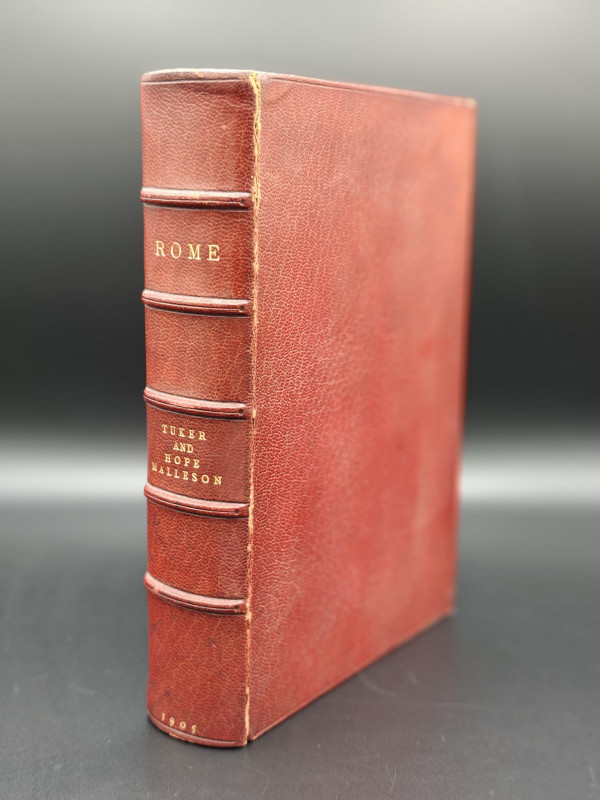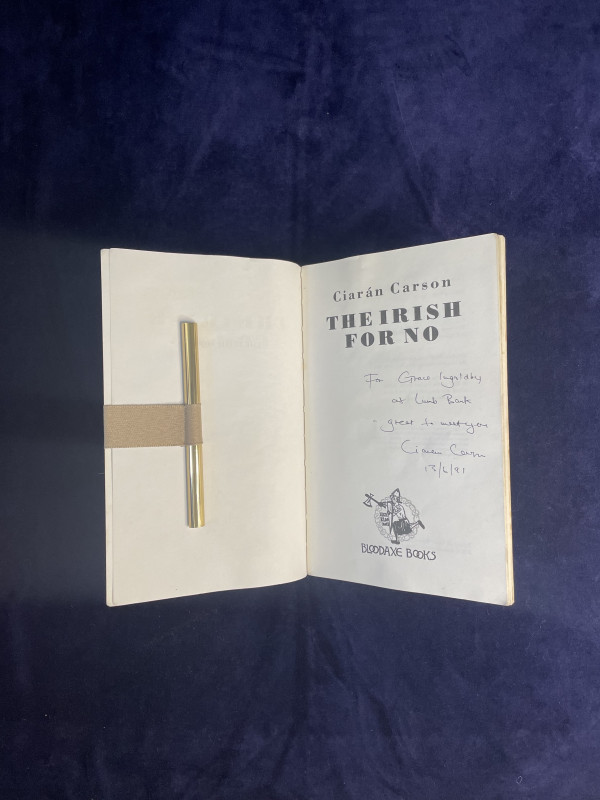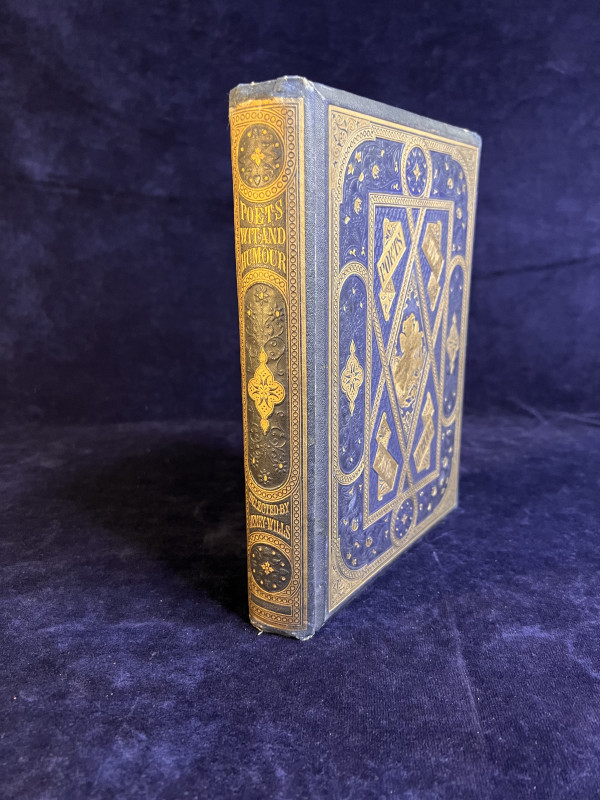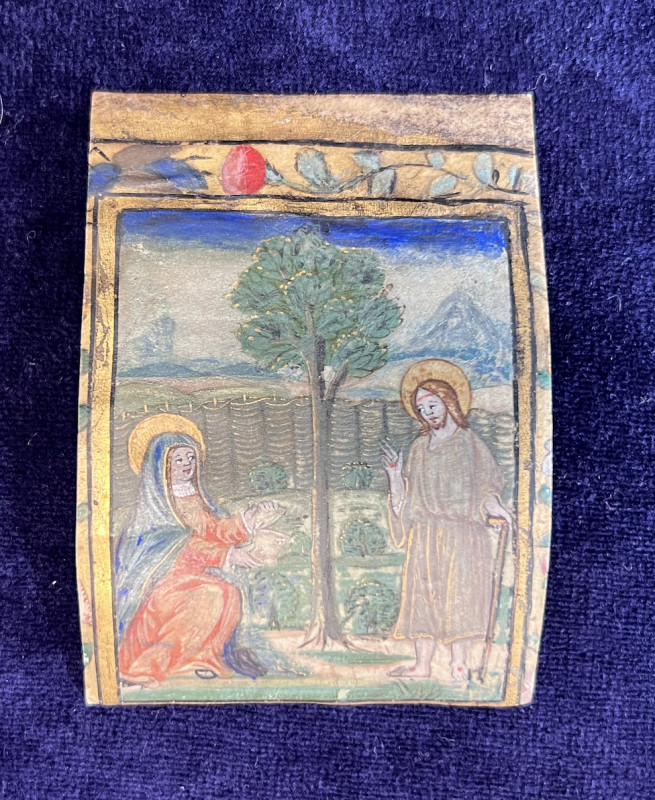Decretals
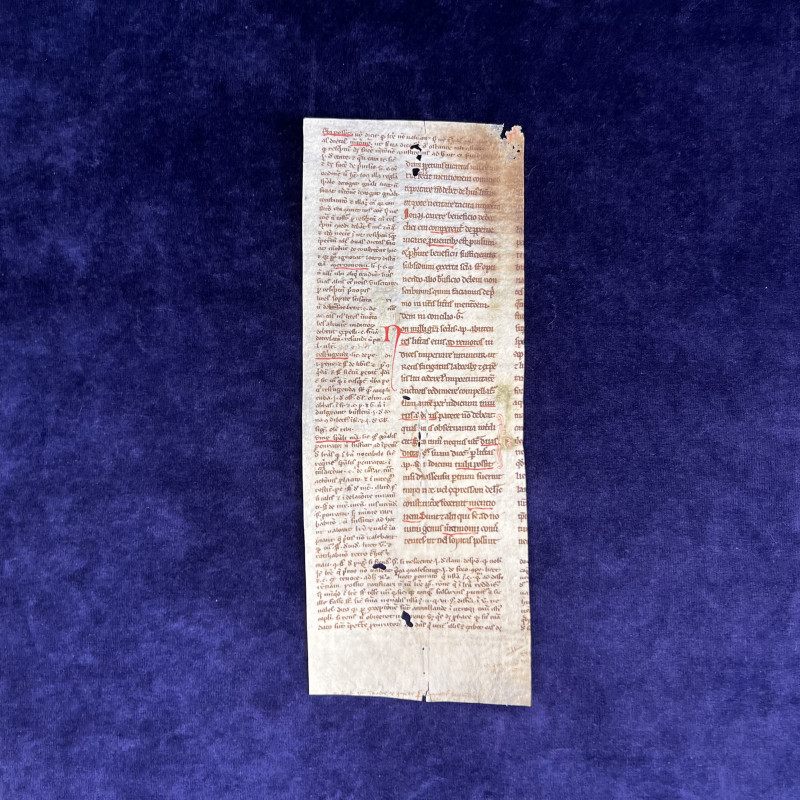
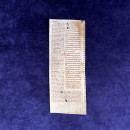
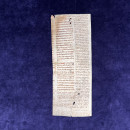
Book Description
France, 1230-1240 & late 13th century. (260 x 105 mm) Single column fragment from Decretals of Pope Gregory IX (Book 1, Chapters 27-28; 30-31) with later addition of Gloss of Bernard of Parma. Partial folio. Originally two columns. Latin. 31 lines of main text surrounded by 61 lines of marginal gloss, further gloss in third hand appears in the extreme margins and occasionally as an interlinear gloss within the gloss. One rubricated initial with two others visibly palimpsested. Several wormholes and browning on top corner.
Dealer Notes
Extremely early fragment of foundational codification of canon law, the Decretales of Pope Gregory IX, written in France within the pope’s lifetime, with slightly later gloss of Bernard of Parma
The scribe of this manuscript of the Decretals of Pope Gregory IX (ca. 1160- 1241), compiled by Saint Raymond of Penyafort (1175-1275), was working during the life of the Pope, making it an extremely early witness not only to the codification of canon law, but also to the promulgation of this important moment in the Catholic Church from Italy to the rest of Europe.
In 1227, Ugolini di Conti took up the mantel as Pope Gregory IX. His papacy saw a conflict with the Holy Roman Emperor Frederick II (the stupor mundi), including excommunicating him for lack of action in the Sixth Crusade. In 1233, he established the Papal Inquisition to begin to reform the legal process of prosecution of heresy across France, Italy, and Germany. He excommunicated the Holy Roman Emperor a second time, denouncing him as a heretic. Ultimately, the conflict between the pacy and the Holy Roman Empire was not resolved during Gregory’s life as he died in 1241.
One of the works Gregory IX is most well known for his collection of papal law, compiled by his chaplain in 1230, to replace the near century of Gratian Decretal primacy.
Gregory’s decretals remained the authoritative source of Catholic papal law for seven centuries— until 1917.
Raymond of Penyafort remains the patron saint of canon lawyers.
The Manuscript:
With in these two extant columns, portions of chapters 27 and 28, 30 and 31 from the first book, “De Summa Trinitate et Fide Catholica” (On the Supreme Trinity and Catholic Faith) appear. These chapters deal with perpetual vicarage
This fragment is particularly interesting for several reasons, not the least of which is that it is datable to the 1230s-1240s, and therefore very shortly after the the original compilation of the decretals. The handwriting also indicates that the scribe was working in France, giving further historic evidence to the speed at which these laws were copied and promulgated.
Three hands have contributed to creating this history. The first hand, that of the original scribe working in circa 1230-1240, wrote the Decretals of Gregory.
The second hand came in later (but not much later) and added the gloss of Bernard of Parma, also known as Bernard of Botone, ( -1263) using the wrap-around apparatus that has become distinct to decretals. This hand uses a crossed form of the Tironian et.
A third hand, which is hardly legible today, has added some signes-de-renvoi or tie marks, to contribute further clarification to the text. This writing appears further down in the margin and between lines of gloss.
Within the text, we see two letters that have been palimpsested, that is scraped off the page. On the recto side, we see a rubricated N to started the word Nonulli in column A. Along Column B, we see the ghostly evidence of another rubricated letter. The red pen flourishes that would have ornamented it are still in tact, but the D has been scraped off. On the verso side, we see the same treatment. The pen flourishes draw the eye to a seemingly oily stain that tells the tale of a palimpsested A.
Further notes on condition:
Though the Christie’s catalogue record from its 1997 sale suggests that it may have been recovered from a binding, the damage is not consistent with binding waste. Both sides are clean without remnants of adhesive and neither edge nor centre show signs of having been bound in. Primary condition issues consist of several wormholes freckle the otherwise well prepared parchment and browning along the top corner.
Dating & location:
This fragment shows features indicating the important transitional period from around 1220 to 1240 as Protogothic gave way to a more fully formed Gothic script. One of the key dating features present is the first line of text appears above the first pricking point in the margins, which means the text is “above top line”— a feature that disappears between 1220 and 1240 in favour of beginning the text “below top line”. The st and ct ligatures are present which further suggest this earlier dating.
The use of the Tironian et (⁊) and ampersand (&) also indicate the transition away from use of the ampersand to the use of the Tironian et which occurs around 1230. Here, we have the ampersand used as a capital Et (recto, line 8) and an uncrossed tironian et used throughout for minuscule ets (verso, lines 8, 10, 12, 28).
The uncrossed Tironian et is characteristic of Southern Europe at this point in time, coupled with the bifurcations of some of the ascenders on the tall d and wedges on ascenders of ls, France is the most likely origin for this fragment.
Given that the Decretales were compiled by Raymond of Penyafort in 1230, that gives us the date terminus post quem, and we can comfortably place the manuscript from ca. 1230 to 1240.
Provenance:
• Christie's (May 20-23, 1997, The sale of the Kasteel van Rumbeke, issue 2333, lot 2743.
The scribe of this manuscript of the Decretals of Pope Gregory IX (ca. 1160- 1241), compiled by Saint Raymond of Penyafort (1175-1275), was working during the life of the Pope, making it an extremely early witness not only to the codification of canon law, but also to the promulgation of this important moment in the Catholic Church from Italy to the rest of Europe.
In 1227, Ugolini di Conti took up the mantel as Pope Gregory IX. His papacy saw a conflict with the Holy Roman Emperor Frederick II (the stupor mundi), including excommunicating him for lack of action in the Sixth Crusade. In 1233, he established the Papal Inquisition to begin to reform the legal process of prosecution of heresy across France, Italy, and Germany. He excommunicated the Holy Roman Emperor a second time, denouncing him as a heretic. Ultimately, the conflict between the pacy and the Holy Roman Empire was not resolved during Gregory’s life as he died in 1241.
One of the works Gregory IX is most well known for his collection of papal law, compiled by his chaplain in 1230, to replace the near century of Gratian Decretal primacy.
Gregory’s decretals remained the authoritative source of Catholic papal law for seven centuries— until 1917.
Raymond of Penyafort remains the patron saint of canon lawyers.
The Manuscript:
With in these two extant columns, portions of chapters 27 and 28, 30 and 31 from the first book, “De Summa Trinitate et Fide Catholica” (On the Supreme Trinity and Catholic Faith) appear. These chapters deal with perpetual vicarage
This fragment is particularly interesting for several reasons, not the least of which is that it is datable to the 1230s-1240s, and therefore very shortly after the the original compilation of the decretals. The handwriting also indicates that the scribe was working in France, giving further historic evidence to the speed at which these laws were copied and promulgated.
Three hands have contributed to creating this history. The first hand, that of the original scribe working in circa 1230-1240, wrote the Decretals of Gregory.
The second hand came in later (but not much later) and added the gloss of Bernard of Parma, also known as Bernard of Botone, ( -1263) using the wrap-around apparatus that has become distinct to decretals. This hand uses a crossed form of the Tironian et.
A third hand, which is hardly legible today, has added some signes-de-renvoi or tie marks, to contribute further clarification to the text. This writing appears further down in the margin and between lines of gloss.
Within the text, we see two letters that have been palimpsested, that is scraped off the page. On the recto side, we see a rubricated N to started the word Nonulli in column A. Along Column B, we see the ghostly evidence of another rubricated letter. The red pen flourishes that would have ornamented it are still in tact, but the D has been scraped off. On the verso side, we see the same treatment. The pen flourishes draw the eye to a seemingly oily stain that tells the tale of a palimpsested A.
Further notes on condition:
Though the Christie’s catalogue record from its 1997 sale suggests that it may have been recovered from a binding, the damage is not consistent with binding waste. Both sides are clean without remnants of adhesive and neither edge nor centre show signs of having been bound in. Primary condition issues consist of several wormholes freckle the otherwise well prepared parchment and browning along the top corner.
Dating & location:
This fragment shows features indicating the important transitional period from around 1220 to 1240 as Protogothic gave way to a more fully formed Gothic script. One of the key dating features present is the first line of text appears above the first pricking point in the margins, which means the text is “above top line”— a feature that disappears between 1220 and 1240 in favour of beginning the text “below top line”. The st and ct ligatures are present which further suggest this earlier dating.
The use of the Tironian et (⁊) and ampersand (&) also indicate the transition away from use of the ampersand to the use of the Tironian et which occurs around 1230. Here, we have the ampersand used as a capital Et (recto, line 8) and an uncrossed tironian et used throughout for minuscule ets (verso, lines 8, 10, 12, 28).
The uncrossed Tironian et is characteristic of Southern Europe at this point in time, coupled with the bifurcations of some of the ascenders on the tall d and wedges on ascenders of ls, France is the most likely origin for this fragment.
Given that the Decretales were compiled by Raymond of Penyafort in 1230, that gives us the date terminus post quem, and we can comfortably place the manuscript from ca. 1230 to 1240.
Provenance:
• Christie's (May 20-23, 1997, The sale of the Kasteel van Rumbeke, issue 2333, lot 2743.
Author
Gregory IX
Date
1230-1240
Binding
None
Condition
Good (Fragment)
Pages
1
Friends of the PBFA
For £10 get free entry to our fairs, updates from the PBFA and more.
Please email info@pbfa.org for more information
